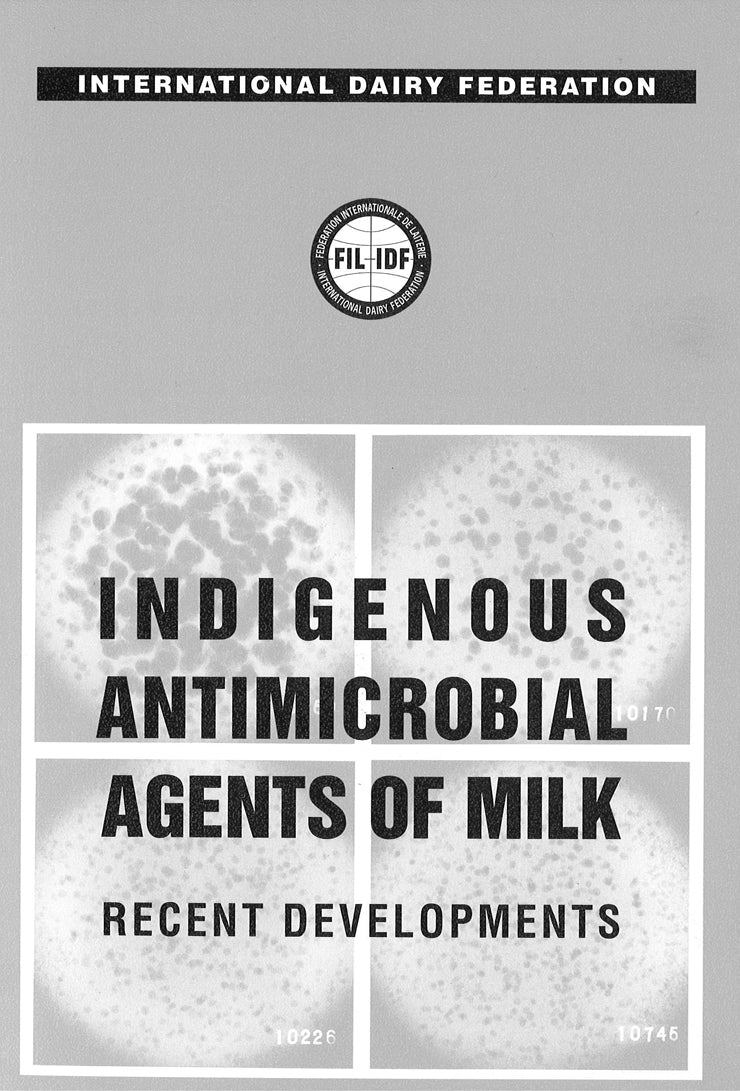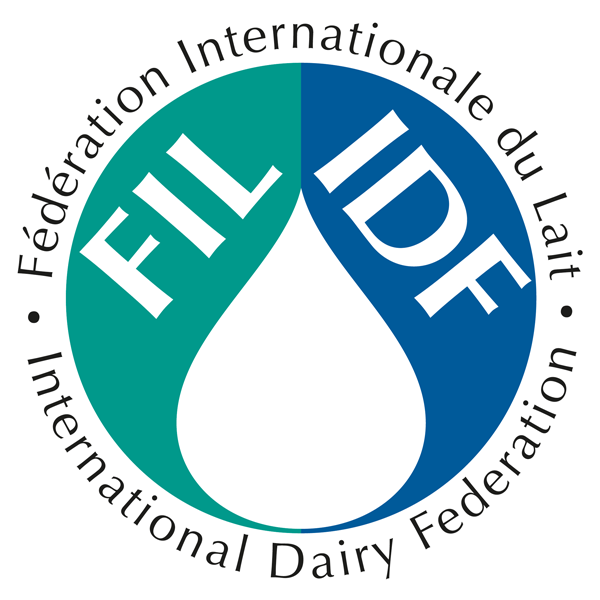Special Issue 9404 - Indigenous antimicrobial agents of milk - Recent developments
Couldn't load pickup availability
Document info
| pages | 228 |
|---|---|
| published date | 24 March 1994 |
| reference | Special Issue 9404 |
Publication description
Proceedings of the IDF Seminar held in Uppsala, Sweden, 31 August & 1 September 1993
The Seminar was divided into four parts.
Part I: Antimicrobial mechanisms. The antimicrobial properties of peptides produced upon enzymatic digestion of lactoferrin are investigated in an attempt to identify useful new bioactive materials derived from milk proteins. Paper 2 traces the history of discovery in the field of passive immunity to the offspring, emphasizing the central role played by the mammary gland and its physioimmunological machinery. Paper 3 looks at the molecular construction of secretory lgA from the lgA dimer and two secretory components of bovine milk. In paper 4 details of animal experiments used to define the biochemical properties of hyperimmune milk anti-inflammatory factor (HIMF) and its mechanism of action are presented and discussed.
Part II: Isolation & assay procedures. The first paper summarizes the methods available for analysis of the system components, giving examples of applications of mathematical models to bacterial growth and survival data. Paper 2 describes the purification of active immunoglobulin from whey using iso-sieving filtration, and finally, paper 3 shows how ion exchangers can be used as a rapid method for the extraction of LP and LF from whey and are potentially useful as alternatives to traditional particle matrices for processing of non-microfiltered cheese whey.
Part III: Medical/nutritional aspect. Paper 1 discusses the physiological role of lactoferrin. This is followed by a summary of information published on more than 800 patients who were treated with various bovine immunoglobulin (antibodies) products targeting Helicobacter pylori, Cryptosporidium parvum, Escherichia coli, Shigella flexneri, Clostridium difficile, Vibrio cholerae, and rotavirus. Paper 3 describes how the fragments of lactoferrin were obtained by mild tryptic hydrolysis in order to locate the site of the lactoferrin molecule responsible for some biological functions. The binding activity of intact lactoferrin and its fragments to Trypanosoma cruzi was compared. Paper 4 reports the results of a treatment study in a germ-free piglet model, designed to evaluate the ability of bovine antibodies against Helicobacter pylori to reduce or eliminate the colonization of the stomach mucosa by this bacterium. Paper 5 examines the effects of heat treatment on the structure and iron-binding capacity of bovine lactoferrin. In paper 6 the results of a double-blind randomized trial of hyperimmune cow colostrum in infants and children aged 6-24 months are reported. Paper 7 compares the Helicobacter pylori – specific antibodies and bactericidal activity in the serum, colostrum and milk of immunized and non-immunized cows. Session 4 was concluded with a study of possible antagonism of the activated LP-system with cell-wall destabilizing antibiotics in whey samples prepared from normal and inflamed milk samples.
Part IV: Applications in milk for product manufacture. The first paper discusses the actual and potential applications of the natural antimicrobial agents of milk in the dairy industry. Paper 2 describes two experiments to determine the efficacy of a whey protein concentrate, used as a colostrum substitute or supplement, when administered as a single feed, in preventing bovine neonatal morbidity and mortality, when compared with pooled colostrum from unvaccinated cows. Finally, the legal situation with regard to preservation of raw milk by the lactoperoxidase system is looked at.
Four posters from the seminar are included:
- Thermal behaviour of bovine lactoferrin in relation to bacterial interaction and antibacterial activity
- Determination of colostral immunoglobulins by gel filtration chromatography
- Relationship between antibacterial activity and porin binding of lactoferrin in Escherichia coli and Salmonella typhimurium
- Titers of specific antibodies in immunized and non-immunized cow colostrum; implications for their use in the treatment of patients with gastro-intestinal infections


